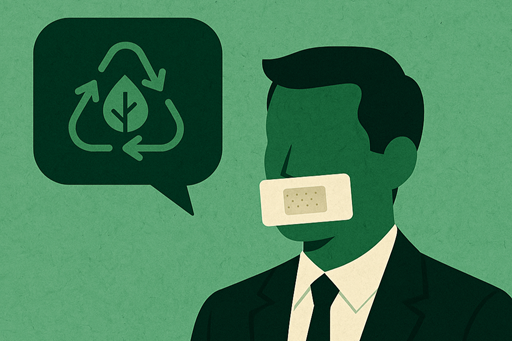The Green Claims Directive declares war on greenwashing and is intended to ensure more "green" transparency.
Greenwashing can permanently shake consumer trust and cause serious reputational damage to companies. The Green Claims Directive declares war on greenwashing and aims to ensure greater “green” transparency.
Consumers today place more value on sustainability and environmental friendliness than ever before. Companies are responding to this increased environmental awareness with a plethora of products and services that are advertised as “green” or “CO2-friendly”. But how can consumers be sure that these claims of environmental friendliness are really true?
Greenwashing refers to the practice of companies advertising products or services as environmentally friendly or sustainable when in reality they do not fulfil the promised environmentally friendly standards, or at least not to the full extent. Why is this a problem? Because these black sheep not only cause confusion and anger among consumers, but also damage the credibility of companies that are making real efforts to reduce their environmental footprint.
Greenwashing includes, for example, attaching environmentally friendly labels to products that are actually harmful to the environment. Making up their own green labels for their products that are not certified or tested by any official body. Using nature-orientated images in advertising campaigns to convey an environmentally friendly image without actually taking any substantial environmental protection measures. Emphasising small environmentally friendly aspects of a product in order to distract from larger ecological problems. And much more.
To combat greenwashing and increase transparency in this area, the EU has introduced the Green Claims Directive, which sets out strict rules and criteria for environmental claims that companies may use in their advertising. Key aspects of the Green Claims Directive are:
– Clarity and accuracy: the Directive requires companies to ensure that their environmental claims are clear, truthful and not misleading. It must be clear which environmental claims relate to which aspect of the product or service.
– Verifiable information: Companies must be able to substantiate their environmental claims with verifiable and reliable data and facts. Environmental impacts must be measured and documented.
– Independent certification: The use of independent environmental certificates or labels is recommended to strengthen the credibility of environmental claims.
– Prohibition of misleading practices: The GCD explicitly prohibits misleading practices such as emphasising insignificant environmental benefits or failing to provide information on the negative environmental impact of a product.
The Green Claims Directive is an important step towards greater transparency and credibility and ensures that companies making environmental claims do so in a responsible and verifiable manner. Companies are encouraged to make real sustainability efforts rather than superficial promises and consumers can rely on reliable information when making purchasing decisions.
Could we arouse your interest in strategy? Click here to find out more about our services.
© https://unsplash.com/de/@curology











